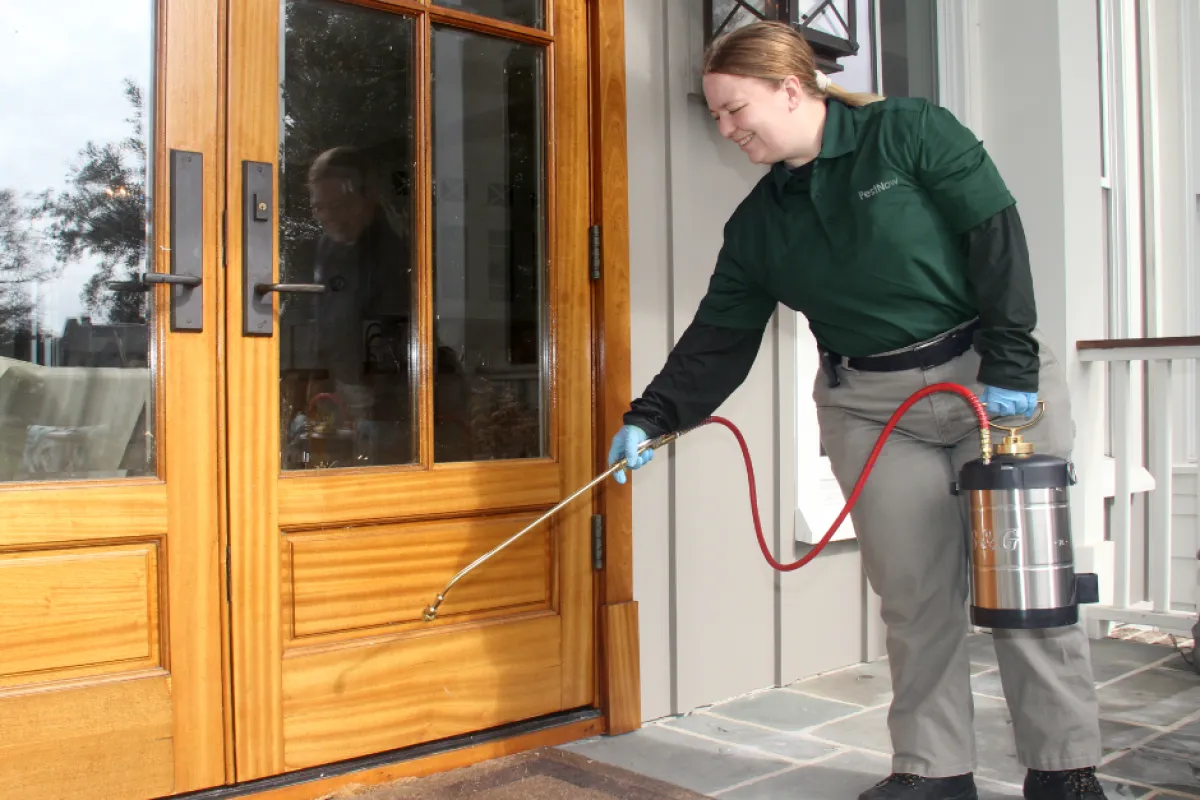A1 Charlotte Pest Control Companies - Your Regional Pest Specialists
A1 Charlotte Pest Control Companies - Your Regional Pest Specialists
Blog Article
Bed Pest Treatment Failure: Comparing Chemical Vs. Non-Chemical Solutions
In the realm of insect control, specifically when dealing with the persistent issue of bed pests, the selection in between chemical and non-chemical treatment services can be a critical one. Both strategies use unique advantages and disadvantages, influencing aspects such as efficiency, safety factors to consider, and general cost. By taking a look at the nuanced details of each technique, a clearer understanding of which path to go after in attending to a bed pest invasion can be attained.
Effectiveness of Chemical Treatments
Chemical therapies for bed insect problems have actually been widely identified for their fast and potent efficiency in getting rid of these bugs. When thinking about the performance of chemical treatments, it is important to comprehend that they can give a thorough and quick option to a bed pest issue.
Moreover, chemical treatments have the benefit of using recurring impacts, meaning that they can remain to eliminate bed bugs also after the preliminary application. This residual activity is particularly helpful in combating any potential re-infestations. Additionally, the fast activity of chemical therapies can bring alleviation to people encountering extreme bed pest problems, permitting them to reclaim control of their living spaces promptly.
Security Interest In Chemical Solutions
One essential facet that needs cautious factor to consider when using chemical solutions for bed insect therapy is making sure the security of occupants and the environment. Exposure to specific chemicals made use of in bed bug therapies can lead to breathing issues, skin irritability, or other negative responses, particularly in individuals with pre-existing problems or level of sensitivities.
Moreover, the environmental influence of chemical remedies is one more significant factor to consider. Some pesticides used in bed bug treatments might be hazardous to valuable insects, wildlife, and environments if they leach into the soil or water systems. It is important to utilize chemical treatments sensibly, complying with safety guidelines, and thinking about less harmful alternatives to minimize these threats and guarantee the effective and risk-free administration of bed insect invasions.
Benefits of Non-Chemical Approaches
Considering the prospective security concerns and ecological influence connected with chemical services for bed insect therapy, exploring non-chemical methods offers a promising option with a number of distinctive advantages. Non-chemical treatments are ecologically friendly, as they do not contribute to air or water pollution, making them a lasting option for insect control.
Furthermore, non-chemical solutions can be effective in targeting bed bugs, consisting of hard-to-reach locations where chemical therapies may not pass through. Methods such as warm treatment, vacuuming, heavy steam cleansing, and bed mattress encasements offer thorough elimination without making use of harmful chemicals. Furthermore, non-chemical methods can be much less turbulent, requiring marginal preparation and enabling quicker reentry into treated locations. Overall, selecting non-chemical bed insect treatment techniques not just focuses on safety and security and environmental defense however also ensures thorough and reliable bug control.
Limitations of Non-Chemical Treatments

Additionally, non-chemical treatments often require multiple applications to accomplish effective elimination. This can be time-consuming and may not always ensure total elimination of all bed insects and their eggs, especially in covert or hard-to-reach locations.
Moreover, the success of non-chemical therapies greatly relies upon proper implementation and thoroughness, which can be testing for people without professional experience. Inadequate application of non-chemical techniques may cause incomplete removal, bring about persistent problems and the need for additional therapies.
For that reason, while non-chemical therapies have their advantages, it is necessary to acknowledge these limitations and consider them when establishing the most reliable method for taking care of bed insect problems.
Price Comparison: Chemical Vs. Non-Chemical Options
Offered the limitations associated with non-chemical treatments, an important aspect to review in the context of bed insect administration is the expense comparison between chemical and non-chemical options. In contrast, non-chemical therapies like heat therapy or heavy steam can be extra pricey, find out with expenses varying from $1,000 to $6,000 for an entire home. While the first expense of chemical therapies may seem reduced, multiple therapies may be called for to completely eliminate the invasion, possibly boosting the total expense.
Conclusion

Thinking about the potential safety issues and environmental impact associated visit the site with chemical services for bed pest therapy, exploring non-chemical methods presents an appealing option with numerous unique benefits.Provided the limitations associated with non-chemical therapies, an important facet to examine in the context bug control near me of bed bug management is the price comparison between chemical and non-chemical choices. In comparison, non-chemical treatments like warm therapy or heavy steam can be a lot more costly, with prices ranging from $1,000 to $6,000 for an entire home. While the initial cost of chemical therapies may seem lower, multiple treatments might be needed to totally remove the problem, possibly enhancing the total price.In final thought, when contrasting chemical and non-chemical bed insect treatment alternatives, it is crucial to take into consideration effectiveness, security, benefits, limitations, and expense.
Report this page